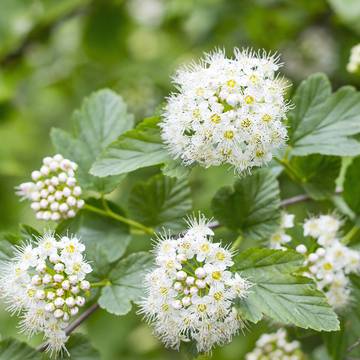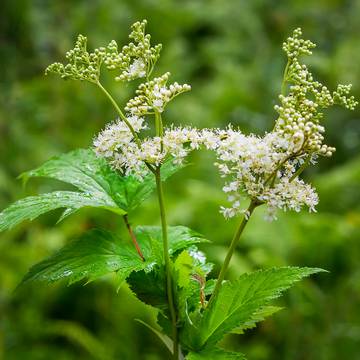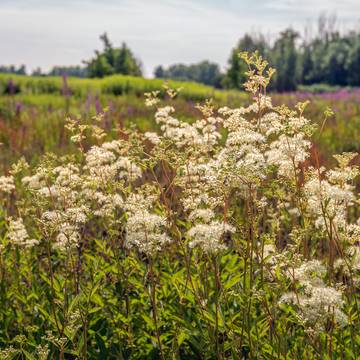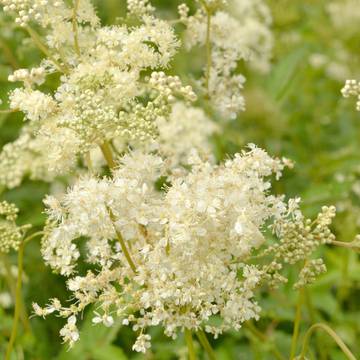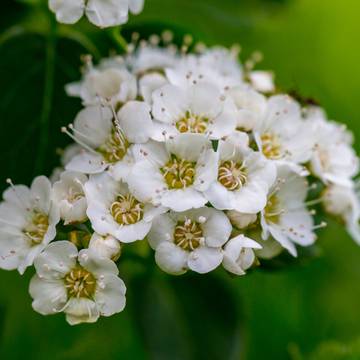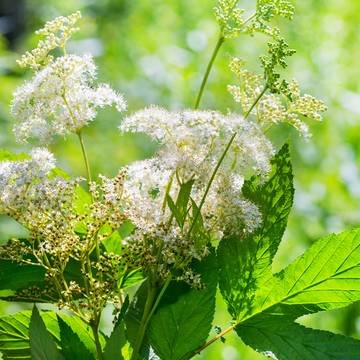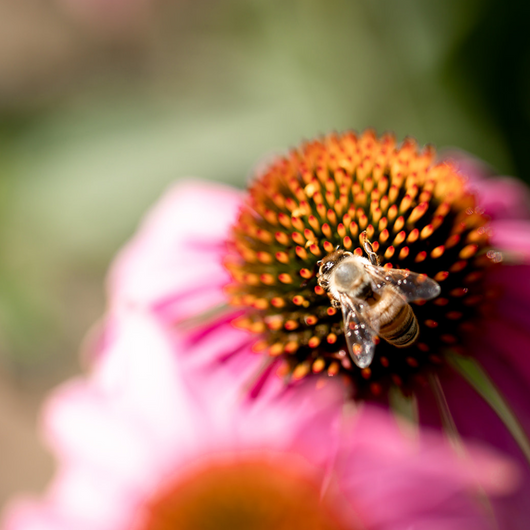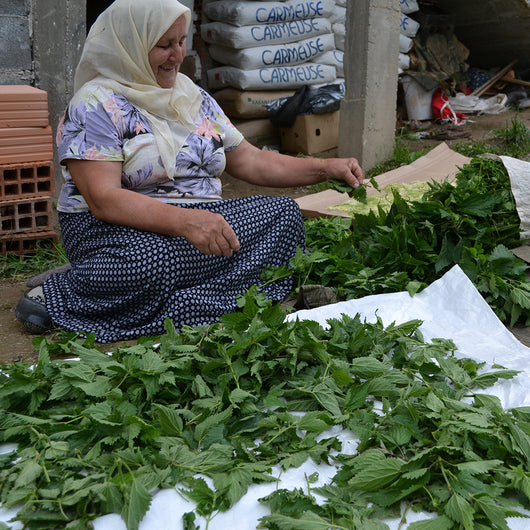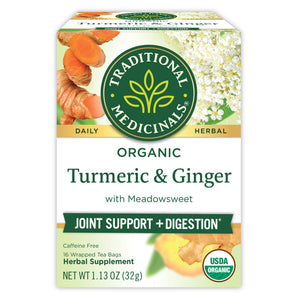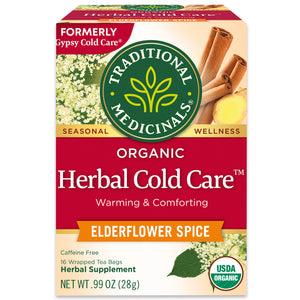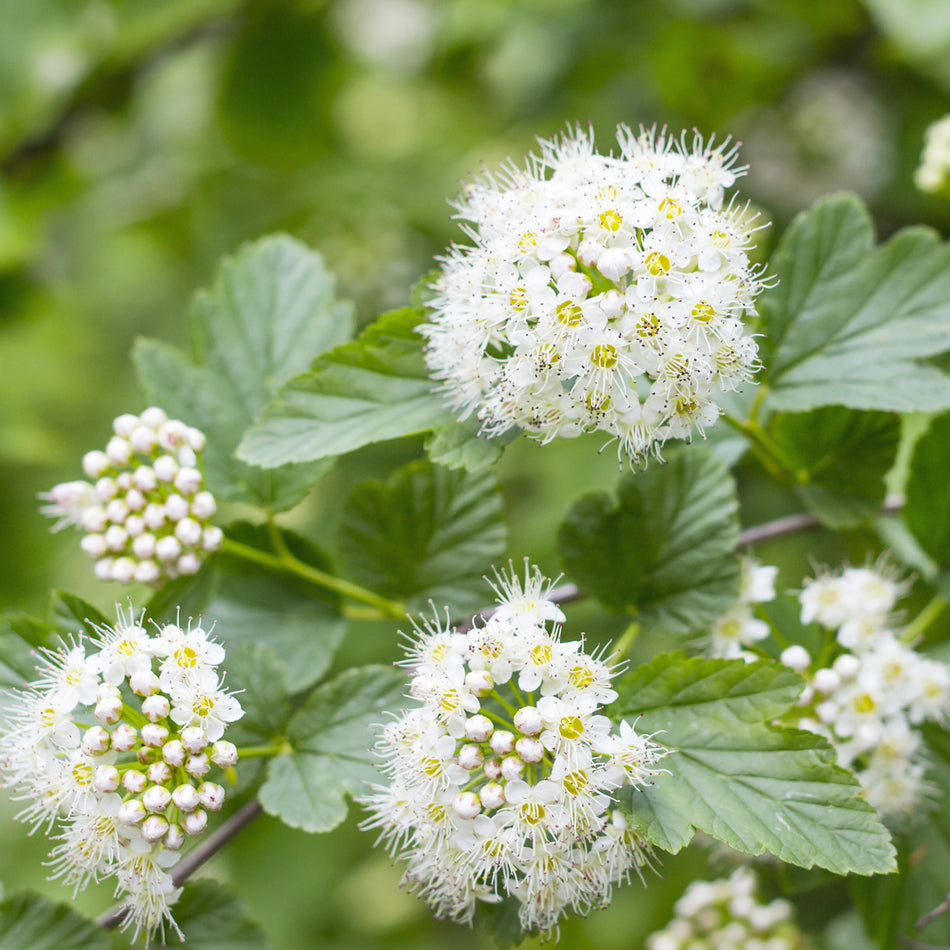
Meadowsweet
Filipendula ulmariaNamed for its sweetly fragranced flowers, the herb meadowsweet provides a soothing presence in herbal formulations calming musculoskeletal discomfort and warming wintertime woes.*
The “Queen of the Meadow” that provides sweet comfort.
What are the Benefits of Meadowsweet?
Containing tannins, meadowsweet is astringent in nature, which contributes to its ability to soothe tissue. This astringency can be useful for wet, boggy, and lax tissue throughout the body. Traditionally, meadowsweet has appeared in tea formulations supporting joint health, for wintertime cold, and those directed at the tissues of the digestive and urinary tracts.*
Like willow bark, meadowsweet contains salicylic acid. First isolated from the plant in Germany in 1839, this discovery solidified its importance as an herb to support joint and muscle discomfort.
Folklore & Historical Use of Meadowsweet
Meadowsweet flowers and leaves have a long history of use in Western Europe and Asia, where it is documented in herbal remedies since the 14th century.
Contrary to our modern definition of sweet, in herbalism when an herb is characterized as “sweet” it is an indication of its aroma, not its flavor. A key feature that has been attracting pollinators as much as humans throughout time. In fact, meadowsweet flowers have been used to make mead, wine and beer, hence the names meadwort and honey-wine herb. It’s umbels of lacy, cream-colored flowers is what’s earned it the nickname bridewort as its flowers commonly found their way into bridal bouquets symbolizing love, peace, and happiness.
Meadowsweet tea also has a honey-sweet and slightly bitter flavor that can be enjoyed throughout the day.
Botanical Description & Habitat
At the height of summer into early fall you will smell meadowsweet before you see it. Named for its love of a moist, sunny meadow and the sweet scent of its creamy cloud-like flower clusters, meadowsweet’s aroma is light and bright. It is also found growing along riverbanks and in pine and aspen forests. This rhizomatous perennial herb is native to Europe and Western Asia, growing from 3 to 6 feet in height.
Reminiscent of other plants in the rose family, meadowsweet’s dark green leaves have serrated edges, 3 to 5 lanceolate oblong lobes, and a hairy underside. Another feature of the rosacea family is its 5 petaled flowers, but you will have to bury yourself among meadowsweet’s fluffy inflorescence to see them as each individual flower is quite small.
When To Use Meadowsweet
Snuggle up to a cup for cold weather relief.
Sip before or after workouts to get movin’.
After fiery meals to soothe digestive tissues.
The Business of Sustainable Plants
Our business is rooted in plants, and for us, it’s a business imperative that we care for the ecosystems where these plants live and thrive. We believe that everything is interconnected, which means supporting ecosystems and the farmers and collectors who harvest and gather our herbs. Finding opportunities to reduce or eliminate emissions at the source, we support organic and regenerative farming practices as well as voluntary certifications like Organic and FairWild. These ensure the absence of pesticides, herbicides, as well as the ongoing sustainability of wild collection, and the health and livelihoods of the collectors who forage. Josef Brinckmann, Traditional Medicinals’ Research Fellow, Medicinal Plants and Botanical Supply, asserts, “Everyone has a role to play in preserving biological diversity. One way of doing that is by equitably supporting the local people to serve as stewards of the land.”
It Starts with Organic
We choose to source organic because we believe in the positive impacts it has on environmental sustainability, biodiversity, and overall ecosystem health. Organic helps us increase transparency while prioritizing consumer well-being and farmer success, which is key to producing the high-quality herbs we source. In 2021, we procured 2.73 million pounds of certified organic herbs, over 99.7% of our total botanical herbs purchased. Volumes were down slightly from FY20 due to timing of inventories received.
The impact from organic farming creates a vital ecosystem through improved soil health, water quality, pollinator habitats, and biodiversity. Organic farms also have increased carbon sequestration potential through long-term carbon storage in the soil, helping to mitigate climate change.
One of the benefits of organic that we most value is farmer health. We care deeply about the people who produce our herbs, ensuring that they are not exposed to synthetic chemicals found in conventional agriculture.
Fair Trade
We believe that everyone deserves a fair wage for hard work. That’s one of the reasons why we’re committed to fair trade. Traditional Medicinals® is a registered Fair Trade “brand holder”, “licensee” and “manufacturer,” and our products are certified by Fair Trade USA, an independent third-party certifier. We were an early adopter of Fair Trade, having launched our first fair trade tea product in 1998, just one year after Fairtrade International (FLO) was established. We continue to work closely with our network of producers to help them to implement fair trade standards and get certified.
Turmeric & Ginger with Meadowsweet Tea
Warming and earthy with a hint of spice,...
Additional Information
Legal Disclaimer:
The information and other content in this article are designed to provide a general overview of the botany, cultural history, and traditional uses of this herb. It is not intended and should not be construed as health advice. Every person is unique and you should consult with your health care provider before using any herbal product or supplement.

